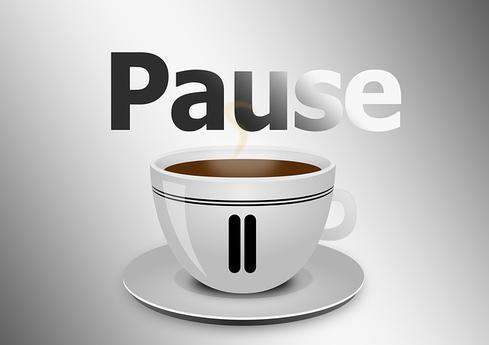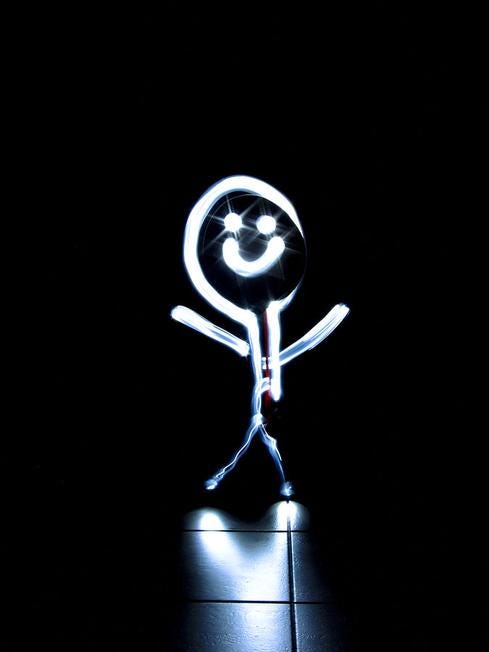Researchers at Baylor University have conducted what they believe is the first empirical study of how to take a break during the workday. Here's a practical guide for how to use your downtime for maximum benefit.


10 Ways To Be Happier At Work
10 Ways To Be Happier At Work (Click image for larger view and slideshow.)
Everybody needs a break during the workday. But have you thought about the best times to take your breaks, and how to get the most out of them?
Two researchers at Baylor University, Emily M. Hunter and Cindy Wu, have conducted what they believe is the first empirical study of how to take a break (fee required). They offer practical advice for how to make the most of your downtime during the workday.
The researchers asked 95 volunteers to track their breaks for one week. After each break they were asked to fill out a survey on their energy levels, focus, engagement, and other measures of job readiness. The volunteers were also asked to disclose physical health traits, such as their levels of eye fatigue, that might slow them down on the job. Factors outside work, such as how many hours the volunteers had slept the previous night, were also factored in.
For purposes of the study, a break was defined as "any period of time, formal or informal, during the workday in which work-relevant tasks are not required or expected, including but not limited to a break for lunch, coffee, personal email or socializing with coworkers, not including bathroom breaks." Perhaps the most startling finding in the survey is that the volunteers took an average of only two breaks per day.
Two breaks per day? It might take me two breaks to finish this article. Considering one of those breaks is, hopefully, to eat lunch, that means through the course of the day, people are only leaving their desks once per work day on average, which seems counterproductive. It turns out the study shows that to be true.
But before we get to how many breaks we need, let's ask why we need breaks in the first place. Why can't the enterprise chain us to our desks for 60 hours a week and expect fantastic work?
The issue, of course, is that as we work, we use up the resources in our brains. We lose energy, focus, creativity, and job engagement. The human brain and body can only exert so much energy at once. Sure, that amount is different for everyone, and some people will be more productive or "tougher" than others. But everyone uses energy to work. Breaks not only restore physical energy, but focus and creativity and engagement. A break gathers back these resources so you can use them again.
Five Ways To Improve Your Break Time
Here are five lessons from Hunter and Wu's research that you can apply directly to your workday, starting now, to make yourself happier and more productive.
1. Take a mid-morning break. Most people try to muscle through to lunch time. Countless work advice columns tell us morning is the most productive time at work. It is true that people are more productive in the morning when they have the most energy. But here's what's wrong with that advice -- people don't actually have batteries.
A battery expends roughly the same amount of output through its lifespan. Charge your smartphone and within general tolerances your battery will keep that smartphone going the same way until it gives out. Humans don't work that way.
Your output diminishes with effort. Let's say you are super disciplined and you can focus on something for eight hours straight. You don't focus on it for eight hours at 100% focus and then give out. You give slightly less focus with each passing minute until eight hours pass and your focus is totally gone. Each minute you spend reduces your output and made you less effective. The same is true for your creativity and energy levels. So the eighth straight hour you put into a project becomes far less valuable than the first minute, which leads us to our next piece of advice.
2. Take lots of small breaks. Smaller, more frequent breaks allow you to stay at your top output for more minutes in the day. Again, you aren't a phone battery that only needs charging at night. Keeping your battery near 100% will help you work all day.
3. Work longer, break longer. Not surprisingly, if you do focus for a long period, nonstop, a quick break isn't going to put you back in fighting shape. Take a longer break (lunch, anyone?) to get recharged.
4. Do something you like during your break time. Some people tend to think a break has to be entirely non-work related and totally restful. The study found that you can benefit from a work-related break, or even a break where you burn some calories.
For example, spending break time talking to a colleague about something new and interesting, or making a to-do list for the day, can be as beneficial as spending your time playing games on your smartphone, checking Facebook, or talking about TV with a colleague. That is, as long as you liked doing it.
[ More breaks plus this trick can help you avoid a cold. Read How IT Workers Can Survive Cold And Flu Season. ]
The same thing goes for exercise. The researchers expected that a workout would be energy draining rather than energy adding. It turns out that people who liked exercise returned to work with more energy and focus. The energy you put into your job is not necessarily the same energy your body uses during a workout. Energy is emotional as well as physical. Of course, there are limits. Run a marathon on your lunch break and you'll probably come back tired.
By the way, that also goes for doing chores, shopping, or anything else -- these things only tire you out if you hate doing them.
4. Take a break for health. People who took more frequent breaks, schedule breaks in the morning, and used break time enjoyably were not only more productive, they also reported fewer health issues such as headaches, eyestrain, and back pain. So take a break to be healthier and more productive.
Some of you may already be instinctively taking the right kinds of breaks, but if you aren't, there is a lot of practical advice here. Take more breaks, especially in the morning. Take time for yourself. Also, recognize that the longer you go without a break, the longer a break you'll need. Try these ideas out and tell us how they wor for you. Does your manager even let you take breaks? What's the standard for break time at your workplace? Tell us all about it in the comments section below.
About the Author(s)
You May Also Like







